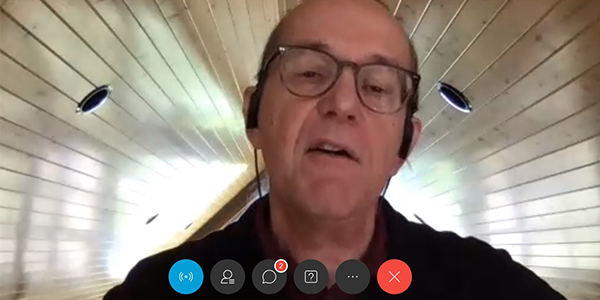Utility executives participating in a virtual panel last week urged MISO to prepare now for the changes sweeping the grid with the increased adoption of renewable and distributed resources.
The online event Thursday riffed off the findings from MISO’s second annual Forward Report released in March, which concluded that the RTO needs to adjust its capacity construct and offer new market products as soon as possible to accommodate a resource mix with a plurality of renewables coming in 2030. (See MISO Forward Report Stresses Near-term Change.)
Following the report, MISO staff said they will soon need to break out the RTO’s annual loss-of-load-expectation study and Planning Resource Auction by season. The RTO said it could begin making filings to move toward a seasonal resource adequacy construct late this year and in 2021. MISO said it will also need a re-evaluation of its scarcity and emergency pricing. (See related story, FERC Rejects Complaints on PJM Seasonal Resources.)
The report was framed from the perspective of five hypothetical MISO utilities and what they will need from a grid operator in the near future.
“Customers have a sense of urgency. They know change is coming to their companies. … They’re making investment decisions, and they need help,” MISO Executive Vice President of Market and Grid Strategy Richard Doying said during the virtual workshop.
By 2030, MISO predicts its generation mix will contain 32% renewables, 28% natural gas, 27% coal and 9% nuclear. In 2018, the RTO’s generation mix was fueled by 47% coal, 27% natural gas, 15% nuclear and 8% renewables. MISO officials have emphasized that the 2030 mix isn’t an RTO forecast but based on utilities’ announced plans.

MISO’s Richard Doying speaks during the May 21 virtual conference.
Doying said the renewable-heavy outlook means MISO must establish new reliability criteria that capture risks across the entire year, not just for one peak summer day.
He also said MISO needs visibility on — but not control over — distributed resources to understand how they affect demand.
“MISO does not want to become a distribution operator. That is far beyond what a central grid operator should do,” Doying said.
In live polling conducted during the workshop, many stakeholders said MISO should be prepared to roll out changes — new reliability criteria, redefined markets, updated transmission planning criteria and better distribution asset communication — by 2025. A few even said MISO should implement plans by 2023.
“We really have to start now to keep that reliability and system efficiency,” Vice President of System Planning Jennifer Curran said.
Cooperative Energy COO Nathan Brown said his co-ops are increasingly seeing the need for resources to respond more flexibly to system conditions. Brown said MISO’s market currently doesn’t put a monetary value on flexibility and that the approximately 550-day interconnection queue isn’t conducive to getting nimble generation on the system quickly.
Xcel Energy Senior Vice President Teresa Mogensen noted her company is working toward a carbon-free goal by 2050.
“It will take support from MISO and transmission and markets and state regulators,” she told RTO executives.
She also said technologies are not “completely mature today to deliver 100% carbon-free energy reliably.”
“Everything is built on the way things were. … We need to look at things with a new eye,” she said, citing the familiar disclaimer: “Past performance doesn’t guarantee future results.”
Mogensen said MISO must develop a more accurate and prolonged forecast that can predict needs a few days in advance.
Innovation on the March
NextEra Energy Resources Vice President Mark Ahlstrom had a sunnier outlook on renewable capability. He foresees a digital revolution where “virtual” power plants erase the intermittent nature of renewable resources.
“Once you pair software with your product, you can do amazing things,” Ahlstrom said. “I think we have to get buckled in for a time of transition.”
Ahlstrom also predicted that technology will make renewable generation extremely responsive sooner than anyone can project.
“I think just about everyone is vastly underestimating how much flexibility” will be achieved, he said.

Mark Ahlstrom, NextEra
Consumers Energy Vice President Timothy Sparks said that by 2030, parts of the MISO footprint could be operated “a little closer to the edge” with smaller reserve margins because of rapid-response load modification.
Voltus CEO Gregg Dixon said MISO needs a market interface “with very clear rules” that can facilitate the participation of “hundreds of thousands” of distributed energy resources. Voltus operates a virtual power plant, which offers demand response into MISO from its commercial and industrial customers.
State regulators must rethink their “outdated” practice of subsidizing load-modifying resources at ratepayer expense and turn to the “socialized benefits of a wholesale market” that they already signed up for, Dixon said.
“It’s not so much the technical issues. It’s the regulatory issues,” Dixon said. But he added that MISO needs to prepare a platform where states can tap into a wider array of DR services. He said the choice for grid operators, states and utilities is to “be better and democratize the grid” or face customers choosing to disassociate for energy independence.
“History has shown that innovation will march forward regardless of the constructs we have put in place,” Dixon said.



